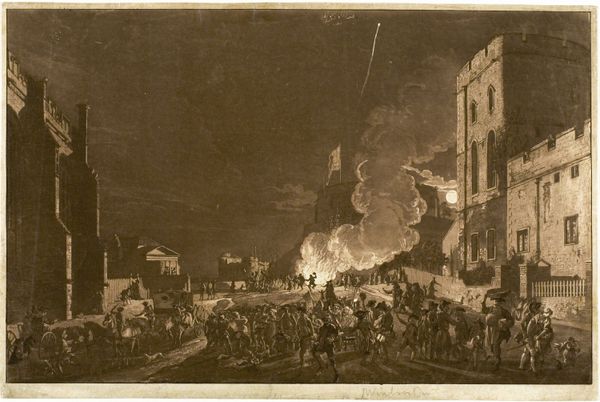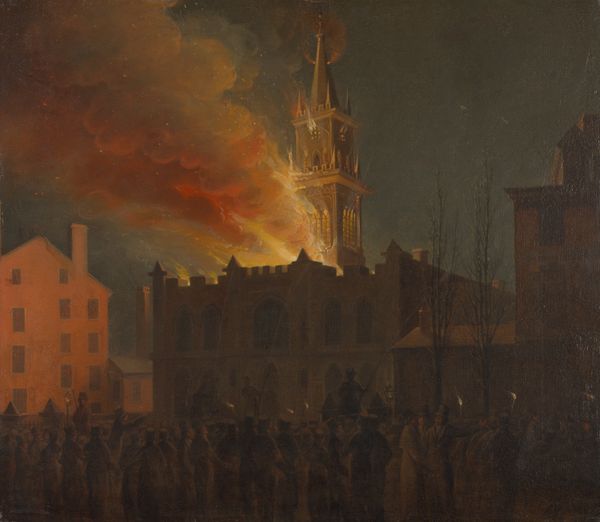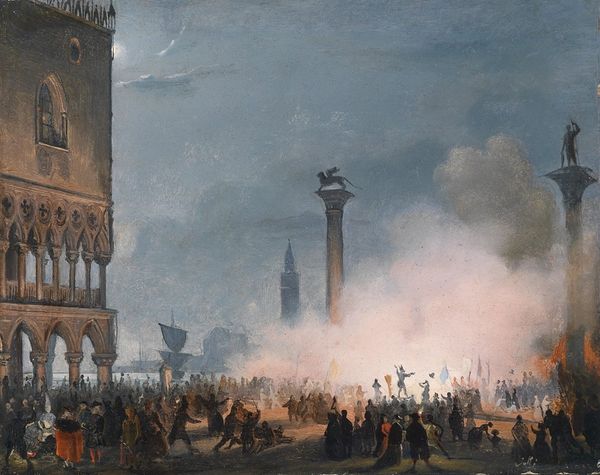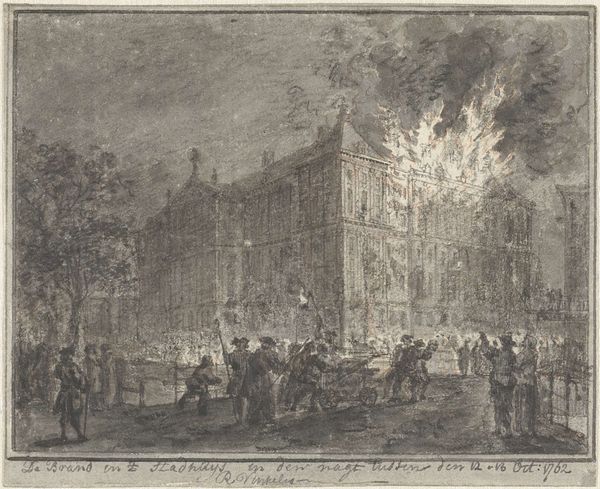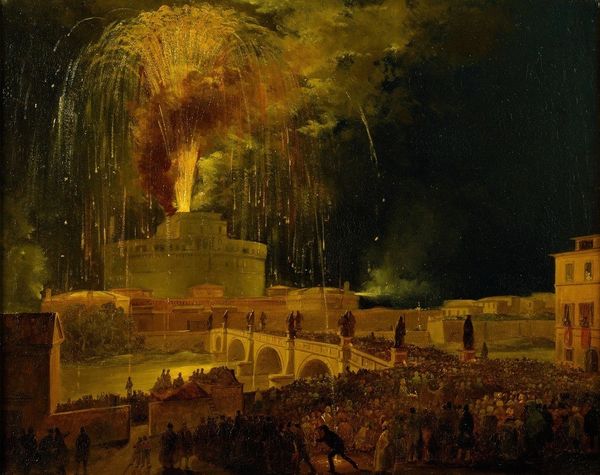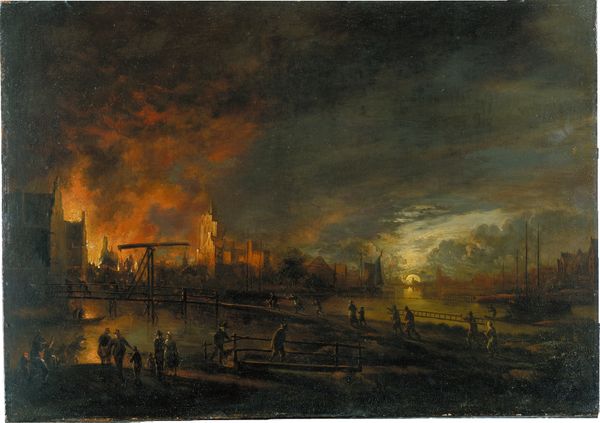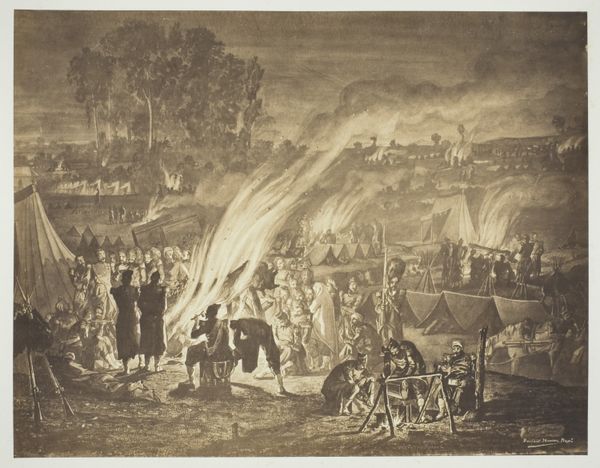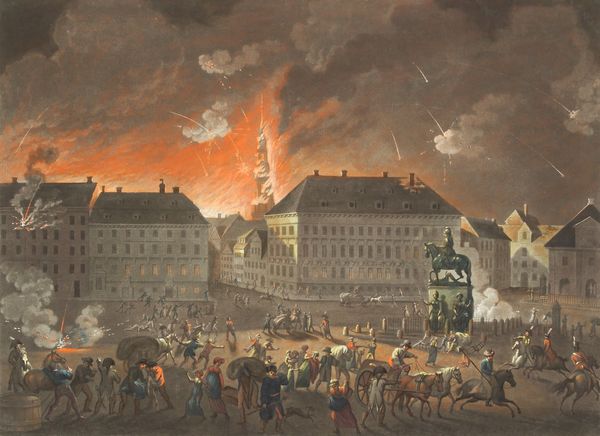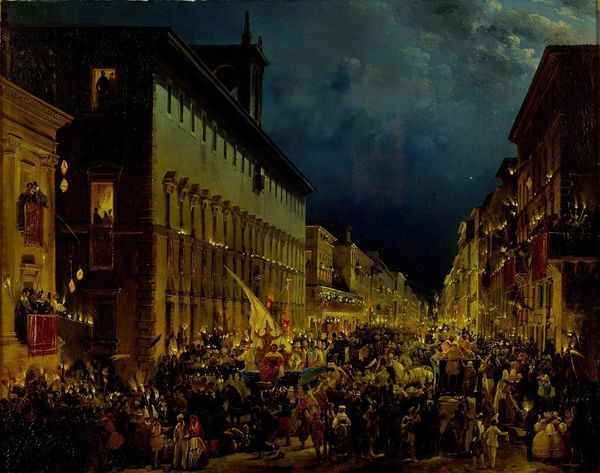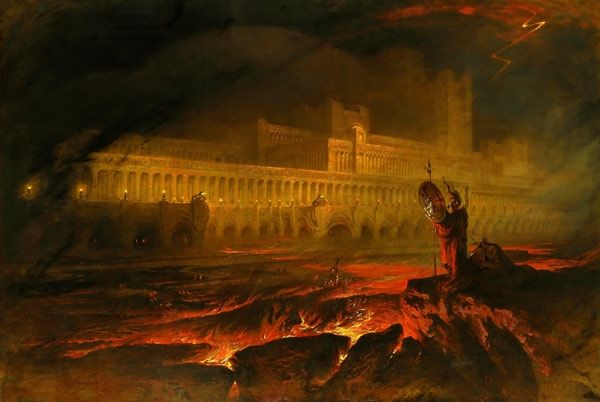
painting, oil-paint
#
night
#
sky
#
painting
#
oil-paint
#
landscape
#
classical-realism
#
romanticism
#
cityscape
#
history-painting
#
italian-renaissance
#
italy
#
realism
Copyright: Public domain
Editor: So, here we have "Blessing of Pius IX from the Quirinale at night," painted in 1848 by Ippolito Caffi using oil paint. The way Caffi captured the light against the darkness really strikes me, especially with the building illuminated in the background. What catches your eye about this painting? Curator: It is indeed a captivating composition. I'm immediately drawn to the dynamic interplay between light and shadow. Note how the verticality of the obelisk, sharply defined against the night sky, bisects the composition, creating a powerful sense of depth. And observe how the architecture serves as a stage, framing the illuminated gathering of figures. Editor: The building does seem to glow from within. Curator: Precisely. The texture achieved through the application of oil paint contributes to the luminosity, almost as if the light emanates not just from the scene but from the very canvas itself. Do you notice how Caffi uses short, broken brushstrokes to define the figures, creating a sense of movement and immediacy? Editor: Yes, they’re less defined, almost like a blur. It gives the sense of a fleeting moment captured in time. Curator: A critical assessment. Caffi masterfully utilizes the inherent properties of the oil paint. The contrasting textures and values – the smooth darkness of the sky against the rough, flickering light on the figures – generate visual interest and further reinforce the dynamism. How would you interpret the architectural forms within this visual arrangement? Editor: They’re stable and permanent, standing as witnesses. In contrast, the flames from the crowd create energy and almost anarchy. Curator: It is clear Caffi seeks a tension between enduring order and fleeting dynamism. What I gather from this, and what Caffi communicates in the application of paint, renders a sense of temporality and drama to an important slice of history. Editor: I agree; now, seeing the architectural elements in contrast to the liveliness and ephemeral nature of the crowd gives me a richer understanding of the artwork.
Comments
No comments
Be the first to comment and join the conversation on the ultimate creative platform.
